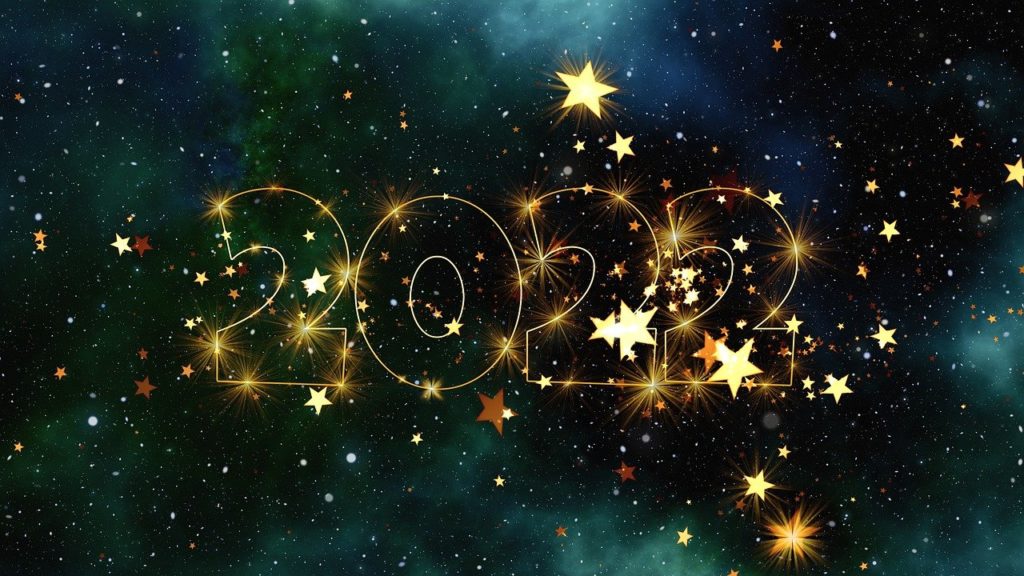
Venus switches from the evening sky to the morning sky this month. Venus outshines everything except the Sun and the Moon, so you can try to find it low in the southwest at dusk for the first few days of January. On January 8, Venus is in line with the Sun and impossible to see. After mid-month, start looking for Venus low in the southeast at dawn.
Mercury continues its brief apparition which started last month. Look for Mercury in the southwest at dusk, over the point of sunset and to the lower right of Saturn. Beginning about January 13, though, Mercury gets harder to see as it returns towards the Sun’s glare.
Jupiter and Saturn remain in the southwest as night falls. Jupiter is brighter than all the stars we ever see at night. Saturn, to Jupiter’s lower right, is somewhat dimmer but still outshines all of the stars near it. After mid-month, however, we’ll start losing sight of Saturn as it, too, appears lower and lower in the twilight. Only Jupiter remains by the end of the month.
Mars is low the morning sky this month. Look low in the southeast at dawn, near the point of sunrise.
The Summer Triangle sets in the west. Watch for the Great Square of Pegasus almost overhead at dusk now and in the west by Christmas. Taurus, the Bull rises in the east. Look for the Pleiades star cluster above reddish Aldebaran. Dazzling Orion, the Hunter rises shortly after dusk (by month’s end, it is already up at dusk). As Orion enters the evening sky, we transition from the relatively dim evening skies of autumn to the brilliant stars of winter. We are beginning to face away from the center of the galaxy, looking at stars behind us in our own part of our galaxy (the Orion Spur).

The Great Square of Pegasus sets in the western sky. Jupiter is low in the west-southwest. Taurus, the Bull, is almost overhead. Dazzling Orion, the Hunter is high in the southeast, with his two dogs behind him. Sirius, the Big Dog Star, is the brightest star we ever see at night. Leo, the Lion, rises in the east. In the north, the Big Dipper gradually re-enters the evening sky.
Moon Phases in January 2022
New January 2, 12:22 p.m.; January 31, 11:46 p.m.
1st Quarter January 9, 12:11 p.m.
Full January 17, 5:48 p.m.
Last Quarter January 25, 7:40 a.m.
The New Moon of January 31 is the second New Moon after the winter solstice. Accordingly, it marks the Chinese New Year; the Year of the Tiger begins as the Year of the Ox ends.
At 12:52 am on Tuesday, January 4, the Earth is as close to the Sun as it will ever get this year; it reaches perihelion. So why is it cooler now than in summer? That’s because Earth’s orbit is almost, but not quite, a perfect circle. The Earth-Sun distance varies only by about three percent, which is just not enough of a difference to make us warmer when we come closer to the Sun. The Earth’s tilt on its axis, not its changing distance from the Sun, causes the seasons.
The latest sunrise of the year (7:17 am) occurs on January 10. That’s due to the same effect I mentioned last month; Earth’s slight acceleration near perihelion makes sunrise, noon, and sunset all occur a little later each day. Most of us sleep through sunrise but are awake for sunset, so you’ve probably noticed that sunsets are significantly later than last month. However, the days aren’t really that much longer, as sunrises have been getting later as well. Although the midday Sun is a little higher in the sky now than on the solstice, the difference is still small. After mid-month, when the Sun starts taking a much more noticeably higher, longer path across the sky each day, we’ll start seeing earlier sunrises and later sunsets as days lengthen.
Our George Observatory is now open every Saturday night for observing! Purchase tickets in advance on our website.
Clear Skies!
Take a look back at Comet Leonard | December 2021 Sky Happenings.






